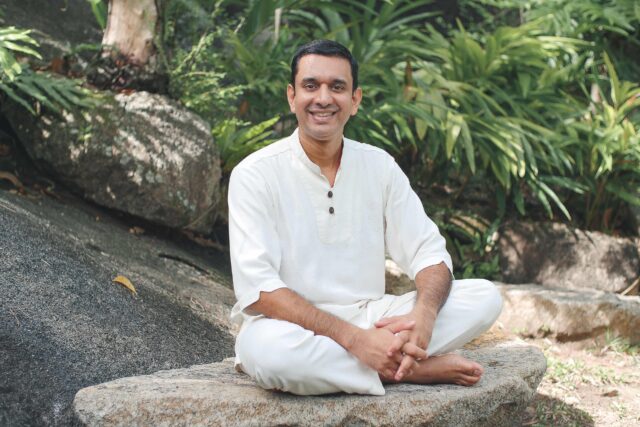If you have found yourself lamenting why your parents or older people in your life can’t be more open to new things, it’s time to learn about cognitive dissonance.
And if you are on the receiving end of this sort of sentiment, please do not take this to mean you’ve got carte blanche to get away with being stubborn.
What we are talking about here is how we can try to find a harmonious way to strengthen intergenerational cohesion through awareness of cognitive dissonance.
Cognitive dissonance is an individual’s subjective reaction, usually distress or discomfort, when their beliefs or established systems of thought are being changed or challenged.
Not many humans wake up in the morning and, while stirring their coffee, think, ‘Hey, I’d really like to challenge my beliefs today!’. Humans generally seek comfort and stability, which means sticking to your beliefs, to what you know, to what’s been tried and tested – and with good reason, as they are what have helped us survive in life so far.
The concept of cognitive dissonance was introduced by psychologist Leon Festinger in the late 1950s. He and later other researchers discovered that the majority of people, when confronted with new information, sought to preserve their current worldview by rejecting it, explaining it away, avoiding it or by convincing themselves that no conflict exists.
While people may judge or consider cognitive dissonance to be a bad thing, it exists for a reason: to help keep us mentally healthy and happy.
This is a normal biological process which helps with decision-making and examining data.
Neural activity captured by functional magnetic resonance imaging (fMRI), has identified the areas associated consistently with cognitive dissonance.
It happens in the posterior part of the medial frontal cortex (pMFC), which is the part of the brain that plays a pivotal role in avoiding aversive outcomes and is a potent, built-in survival mechanism.
The insula and dorsolateral prefrontal cortex (DLPFC) are also associated with cognitive dissonance. The insula, responsible for processing emotions, is more active when humans are upset or angry, while the DLPFC is strongly associated with cognitive control.
Of course, we all want to avoid bad outcomes and feel we have a level of control over our lives, no matter what age we are.
Music offers a beautiful parallel in understanding cognitive dissonance. In music, as in cognition, the reaction of the individual is subjective. It depends on factors such as age, health and previous exposure to dissonance.
Consonant notes are described as “agreeable,” and just sound comfortable. As long as the music doesn’t change, it does not induce anxiety.
Equally, dissonant notes can feel not only disharmonious, but unsettling. They actually create tension, which the listener naturally wants to release or resolve, usually by turning the music off. But that tension and release also work to make a piece of music exciting and interesting, if you are open to it – just as in life.
To some people, music without dissonances can seem simplistic or boring, while for others, it is so off-putting that they turn that mere distaste turns into rigidity of attitude. That would explain the grandparent who won’t listen to Post Malone and sticks to Frank Sinatra.
Another parallel can be drawn with fear, which is one of the strongest evolutionary tools we have. You may consciously determine whether the fear is valid or only a perceived threat. If it is invalid, you breathe, remind yourself you are safe and carry on , even if you still feel afraid. The same is true of beliefs. Even if they are not the healthiest or most helpful, if they are repeatedly reinforced by your continued survival, changing can be stressful.
It is your choice to determine whether to be open to new systems and then to decide whether they are dangerous or could be beneficial. Alternatively, you may decide they’re not worth considering at all, or that you still prefer your initial beliefs. The choice is always yours; the only point of difference is to do so consciously.
Ultimately, it is our quintessential discomfort with uncertainty that requires scrutiny but we can make can the experience more pleasant for ourselves and others, so that we can maintain and enrich our connections through generations and through listening and considering. Our minds have the flexibility to do that. We can learn new things, enrich our lives and foster new neural pathways to stay healthier for longer.
And when it comes to our relationships, it is those with more malleable minds that can communicate more diplomatically, more effectively, without causing stress to those with less open minds.
Every time we discuss a ‘sensitive subject,’ we may be entering the realm of cognitive dissonance. The person inviting dissonance should observe the recipient’s reaction and determine whether the adverse impact is worth the challenge.
So rather than pushing forward when you hit what looks like grumpy immovability in your elders, don’t. Knowing about cognitive dissonance helps you not to judge or take their attitude personally. Accept it and appreciate it as a survival mechanism; the goal of the more malleable mind is to stay open and flexible in the way you think and interact.
Remember how every piece of music, no matter how different, creates tension and release, dissonance and consonance. This is what makes life interesting. And ultimately it is for every one of us to decide what we want to listen to.






